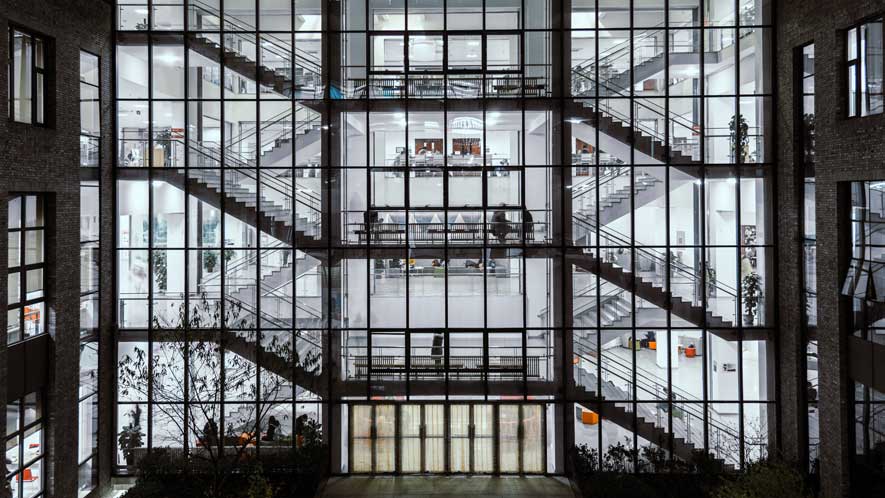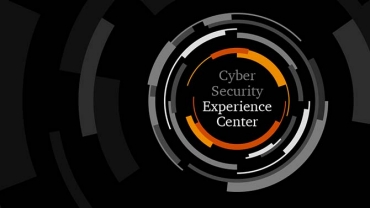
The importance of cyber security is increasing. How good is your security architecture?
The world is changing rapidly and so is the need for new technologies, which also increases the risk of digital threats. Therefore, the importance of cyber security is growing. Today, companies already require a variety of complex systems and measures to ensure the protection and security of employees, critical assets and intellectual property. Every day, companies become victims of various attacks that not only disrupt business operations, but also compromise the security of employees and the company. For this reason, architectural designs must always be up to date to provide the smallest possible attack surface. It is therefore anything but trivial to keep an eye on whether the current security architecture aligns with the company's strategy. An incomplete or outdated security architecture thus makes companies a target for internal and external attacks. To counteract such threats, Enterprise Security Architecture offers a holistic and preventive security approach that examines the current security architecture for vulnerabilities as well as potentials and develops a target model including measures.
“Enterprise Security Architecture secures organizations in a dynamic environment and balances opportunities and risks by aligning organizational structures, processes and tools with customer business objectives.”
What we stand for
Why the security architecture is so important
Gaps in their security architecture make companies vulnerable, both consciously and unconsciously. There are many examples of possible security gaps: Employees print and fax secret information that needs to be encrypted without having dealt with the topic of encryption. Other employees make the personal password available to colleagues for substitutions and thus grant them unauthorized access to software systems. In these cases, the security solution used by IT security management cannot develop its full effectiveness due to a lack of security sensitivity on the part of the employees. The risk is particularly high if the users do not correctly assess the dangers and deliberately circumvent the existing security solutions.

The PwC study "Digital Trust Insights" shows: Only every third company worldwide considers its ability to defend against cyber attacks to be good or very good. So, it is extremely important to design the enterprise architecture in a secure way. Organizations should, on the one hand, focus on the capabilities that pay off for the business strategy and, on the other hand, also evaluate the capabilities in light of current circumstances as well as future threats. The PwC experts support you with their cross-industry know-how and their holistic approach. In this way, an individually tailored, flexible security architecture can be developed.
Facts and figures
59%
of German CEOs consider cyberattacks as the biggest business risk.*
85%
of companies worldwide do not have their cyber security strategy closely aligned with their business strategy.**
78%
have no regular exchange between cyber experts and top management.**
For 59%
cyber teams do not consistently collaborate with other risk areas on digital initiatives.**
PwCs Enterprise Security Architecture
Designing the digital transformation of organizations using secure architectures
The core of our approach is the PwC reference architecture. Using this, we examine the status of an organization's security architecture capabilities and provide financial and technical insight into the interaction of people, processes, and technologies. PwC offers consulting services in the form of assessments. This involves breaking down existing tools and resources into higher-level components that help derive capability assessments at the domain and tool levels and assist in identifying cyber risks.
Our approach: From strategy to implementation
Our approach – from the analysis to the target model – consists of the following steps:
Step 1 – Strategy Assessment: Understand how people, processes, and technologies work together to secure the organization. This can be done, for example, in the form of workshops and document analyses.
Step 2 – Modelling: Analysis and representation of the organization's capabilities, tools and connections using the PwC reference architecture.
Step 3 – Creation of the target architecture: Maturity assessment and identification of improvement potentials and fields of action - usable findings and recommendations for the target architecture in order to defend oneself efficiently and effectively against attacks.
Our services
- Capability definition
- Maturity analysis
- Establishment and optimization of the security architecture
- Development of target architectures and roadmaps
- Strategic further development
Capability definition
PwC supports companies in transparently identifying and defining their cyber capabilities. We take a holistic view of personnel and organization, processes and services, as well as products and tools. Using our PwC reference architecture, we take a close look at your current state and identify unnoticed weaknesses.
Maturity analysis
Based on security architecture maturity assessments, PwC's cyber experts identify courses of action that both improve your organization's cyber capabilities and keep costs in mind.
Establishment and optimization of the security architecture
We advise and support you in setting up and further developing your security architecture:
- Strategy & situation models
- Process & tool analysis
- Organisation, responsibilities & governance
- Methodology & frameworks
Development of target architectures and roadmaps
Based on your goals and security capabilities, we work together to develop target architectures, plans for implementing courses of action, and sustainable solution approaches.
Strategic further development
We develop sustainable security architectures that fit into your corporate architectures and provide support from planning to transition. We adapt the architecture to the business and IT strategy.
Why PwC
Our collaboration: PwC as a partner at your side
PwC supports companies in profiting from the opportunities of digitalization and in protecting themselves against security incidents. With our consulting expertise and cyber-specific know-how, more than 400 cyber experts support our clients in implementing and operating the necessary IT security measures. PwC is the global leader in cyber security consulting, according to analyst ALM Intelligence. Our expert Dr. Silvia Knittl is available for a detailed discussion.
“Security does not only take place on a technical level but is a central and comprehensive management task.”

Standards help in implementation
PwC's consulting services include the common security architecture frameworks – such as ISO/IEC 27000 series for information security management, SABSA model, TOGAF – and trains its teams in them.
The Enterprise Security Architecture Framework from PwC Germany goes one step further and combines the collection, analysis, and evaluation of the security architecture with the combination of the various standards. This not only captures what is in place and the extent to which standards are met, but also determines the extent to which the security architecture can more efficiently meet the organization's goals, including compliance with standards. This enables us to use synergy effects and to design, implement and measure security requirements and solutions tailored to your needs.

Zero Trust Assessment & Architecture
Why organizations should rethink their approach to security
Traditional IT security is increasingly being weakened by rapidly advancing technological developments and new ways of working. These diverse use cases increase the potential attack surface and result in new vulnerabilities that offer attackers new opportunities to grab valuable data or disrupt critical business processes and infrastructure. For this reason, IT and security leaders must seek modern, comprehensive solutions for their architecture and consider a fundamental change.
“Enterprise Security Architecture increases the resilience of organizations to the greatest business risks of our time. With a thoughtful and future-focused architecture, organizations can identify potential threats early and remain adaptable in the face of dynamic demands.”
Contact us










